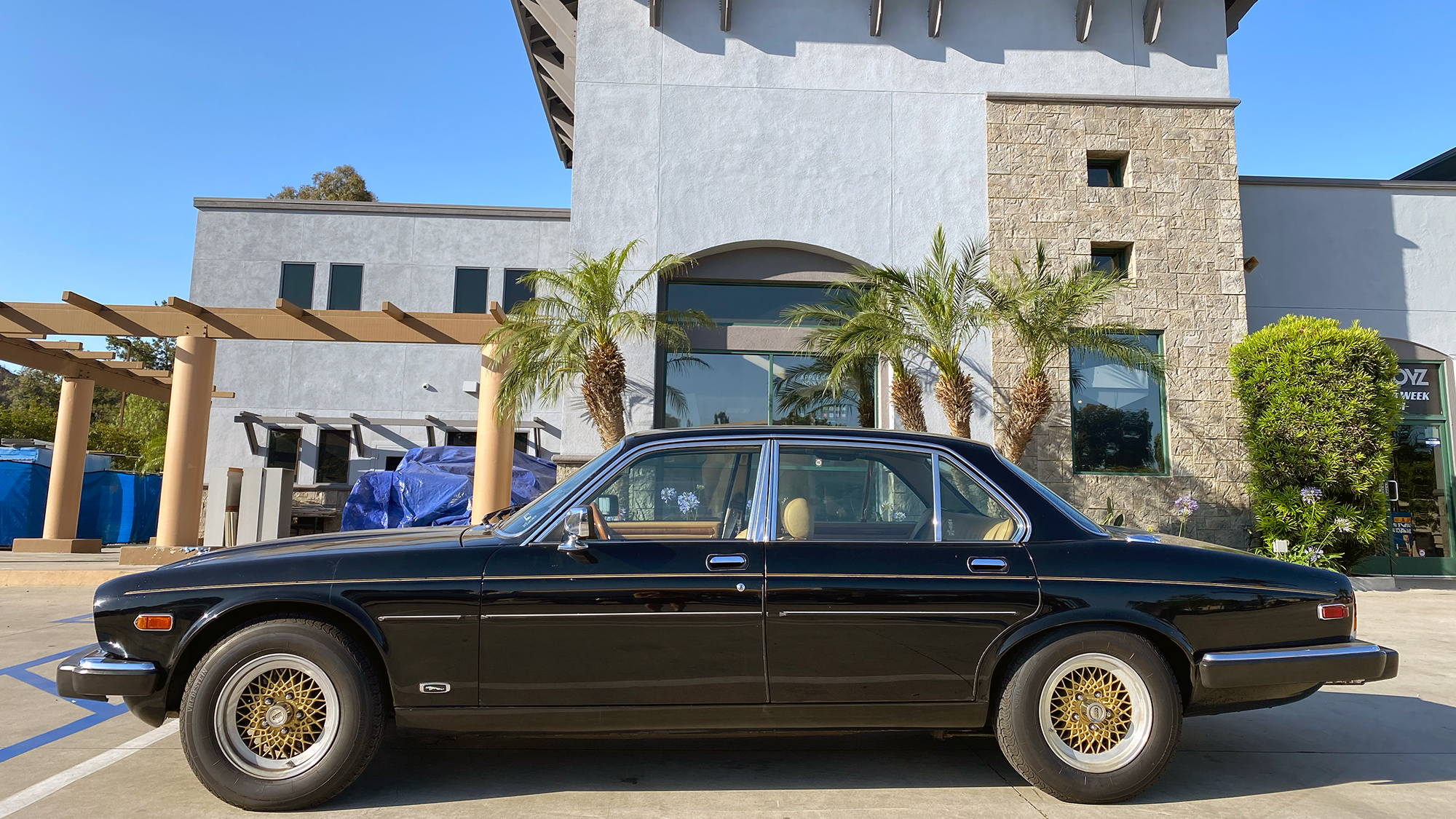My 1986 Jaguar XJ6 runs strong. It sounds good. The seats are supremely comfortable, and the ride is great. It also runs rich and chugs fuel, needs an updated radio since I have zero tapes, could use some tint on the glass so I don’t fry in there, and the AC needs a recharge. Also, if it idles too long it will overheat. I’ve fixed two of the above-mentioned issues, which are the least two important ones to fix. That’s how it goes with a drivable project car, right?
I’ll have updated pics and information soon, but just know the Jag now has darker windows and the Continental head-unit I purchased has been installed. The day prior to doing that, I was idling my way through a slow Starbucks drive-through when noticed the stock temp gauge climbing. Not the aftermarket one that I was told to keep an eye on, but the OG Jag gauge. It had shot past 90-degrees Celsius and was climbing. By the time I pulled away with my cold brew in my hand, I saw a wisp of smoke flow out the nose of the car.
Thankfully, however, I pulled onto the street, got that fan spinning, and the temp immediately came back down. No harm, no foul. The Jag overheated again though when I left it at the shop in the above photo for its tint and tunes upgrades. They had let the car sit for a minute with the engine running, noticed it starting to boil over, and immediately shut it down. I arrived to pick up my car with its hood up and a puddle of coolant beneath it. I assume this is a standard Jaguar operating procedure.
So I’m starting to go through and see why this might be happening. A 180-degree thermostat is on its way from RockAuto. I’ve already received a new O2 sensor to start checking on why it might be running rich. And I was thinking about trying one of those AC Recharge-In-A-Can setups to see if they work.
More on all of this, soon.


Leave a Reply